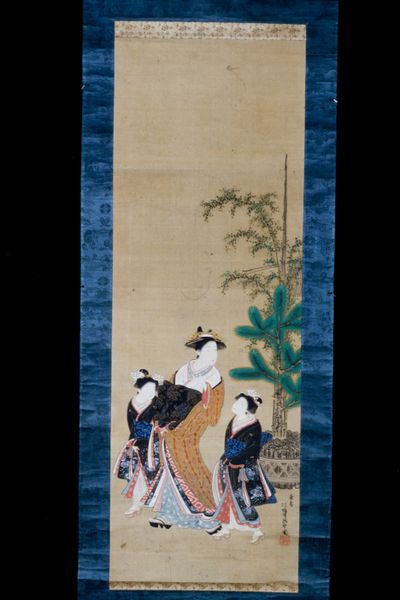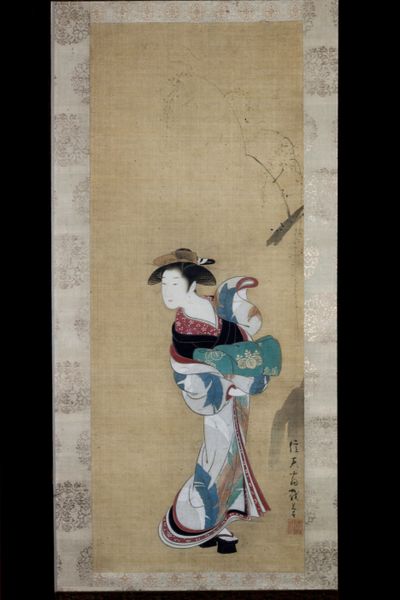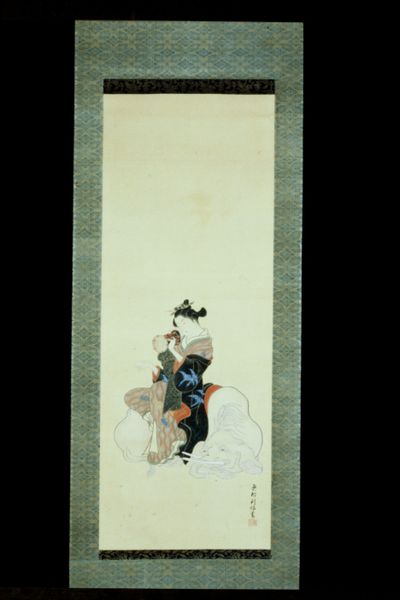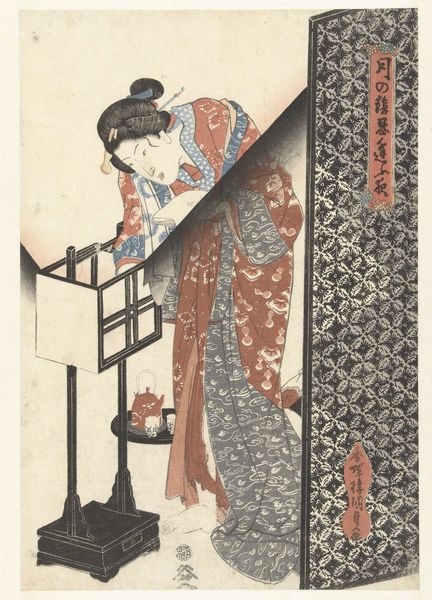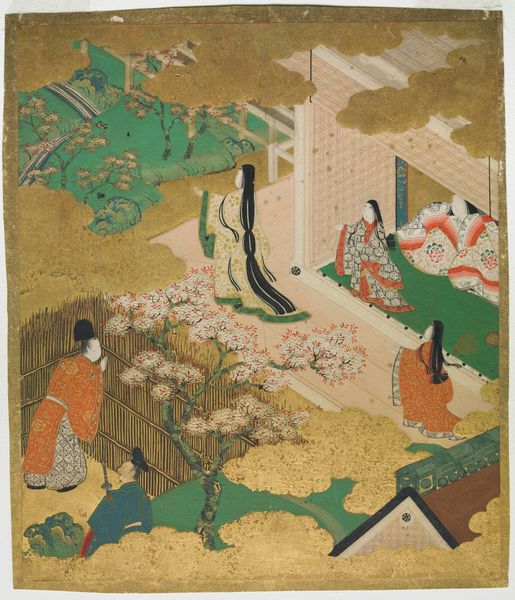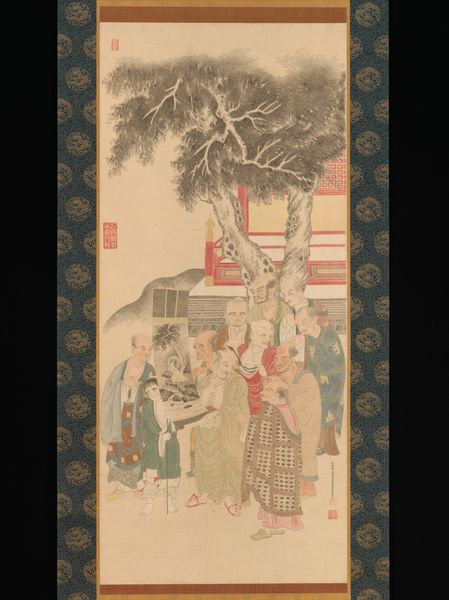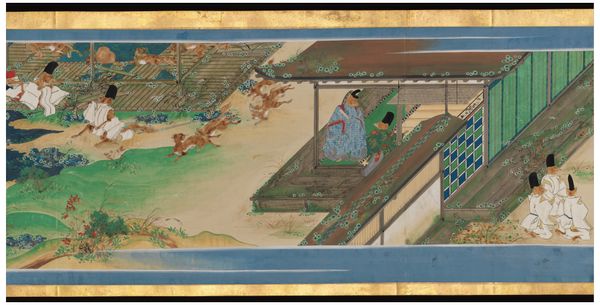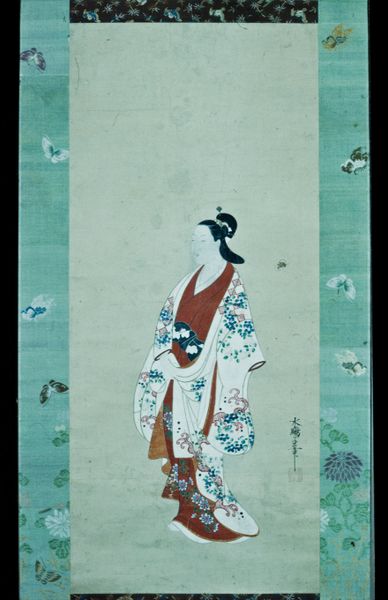
Kamuro Serving Tea to a Prostitute c. mid 18th century
0:00
0:00
painting, paper, hanging-scroll, ink, color-on-paper
#
painting
#
asian-art
#
ukiyo-e
#
japan
#
paper
#
hanging-scroll
#
ink
#
color-on-paper
Dimensions: 31 1/2 x 10 5/8 in. (80 x 27 cm) (image)63 x 14 15/16 in. (160 x 38 cm) (sheet, mount) 43 cm W w/rollers
Copyright: Public Domain
Editor: This hanging scroll, "Kamuro Serving Tea to a Prostitute," created around the mid-18th century by Suzuki Harunobu, is painted with ink and color on paper. It feels incredibly intimate, like a secret glimpse into another world. How do you interpret this work, especially considering its social context? Curator: This print offers a fascinating look into the Edo period pleasure districts. Consider the 'floating world,' or ukiyo-e, which aimed to depict everyday life and the transient beauty found in entertainment. What is captured isn't simply a woman receiving tea. The presence of a Kamuro, an apprentice prostitute, signals the hierarchies and complexities within that society, reflecting societal norms about beauty and entertainment for the upper classes. Who are these images really for, and what are they meant to convey about the subject represented and the world surrounding her? Editor: So, it's not just a pretty picture, but a commentary on the societal structure surrounding these women? Curator: Precisely! It brings to mind questions around agency, representation, and how social dynamics were codified through art. Notice how Harunobu has positioned the figures. Does it normalize their existence, celebrate it, or something else? It makes you think about the politics of viewing. Editor: That is an interesting question. I hadn't considered who the intended audience might have been. This opens up so many new lines of inquiry! Curator: Indeed, and remember how museums like the Minneapolis Institute of Art function to create a viewing audience across many ages. Editor: Thanks. I hadn't really appreciated how much social history could be packed into a seemingly simple scene. Curator: My pleasure! There is always a new thing to discover!
Comments
No comments
Be the first to comment and join the conversation on the ultimate creative platform.


